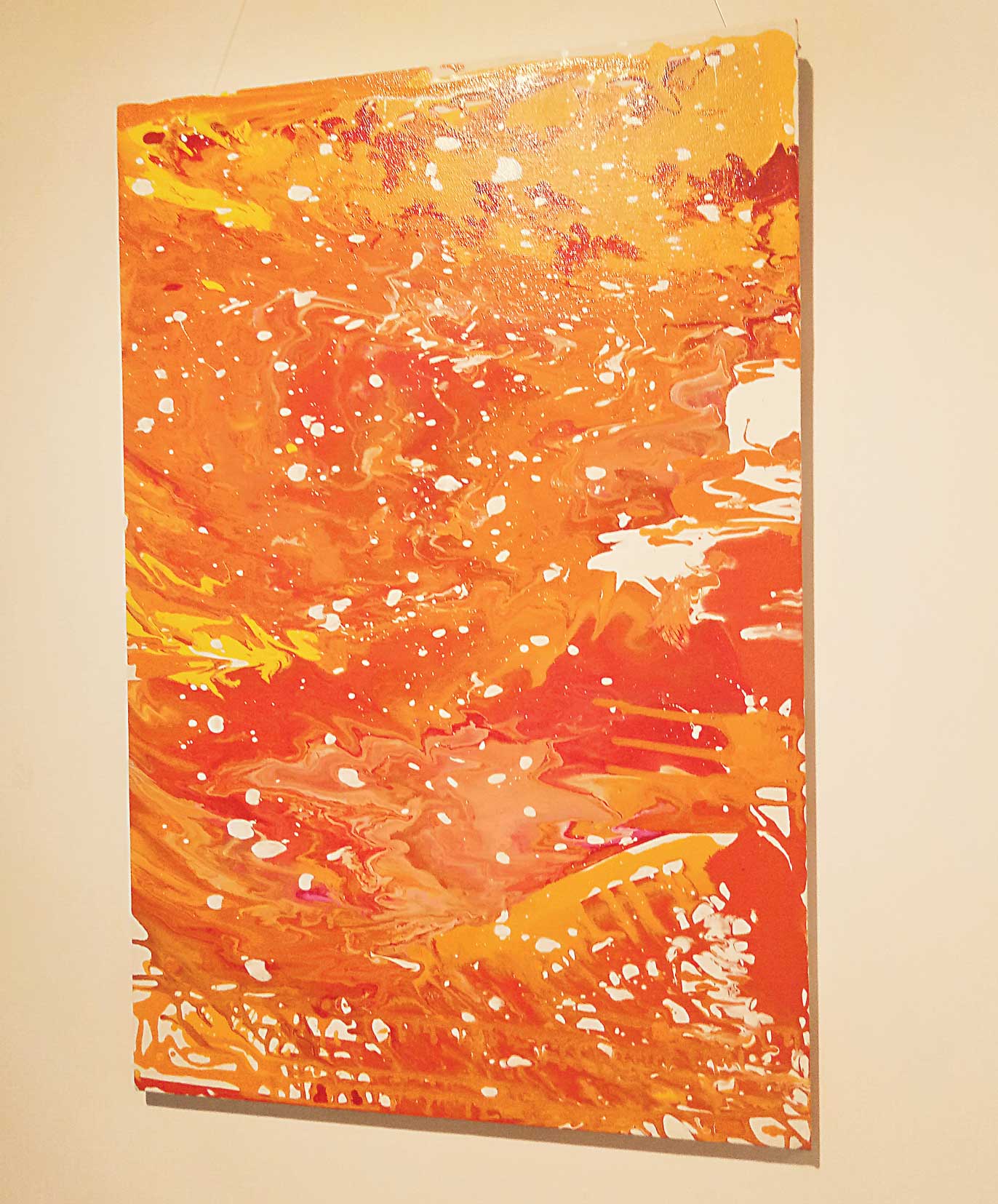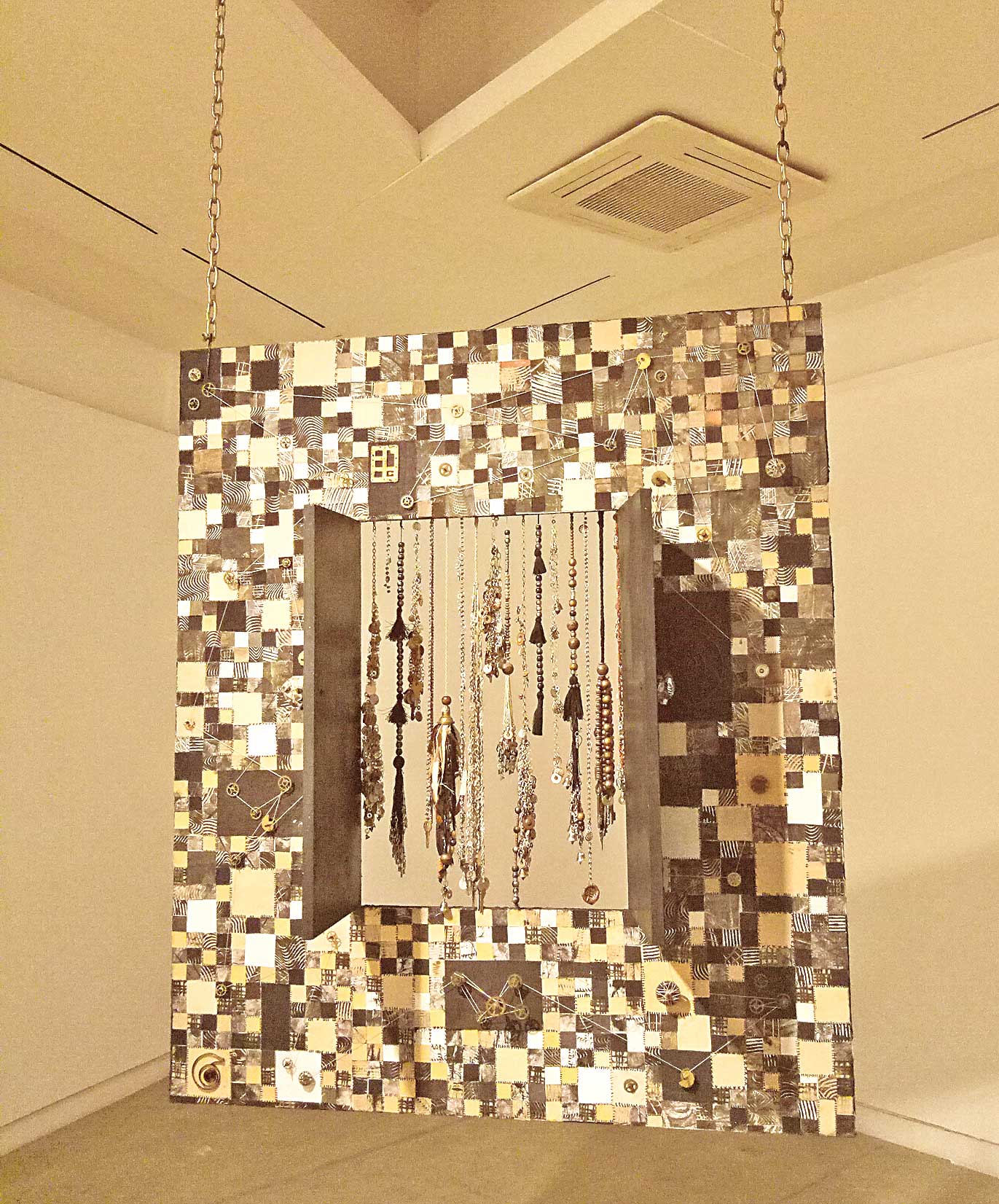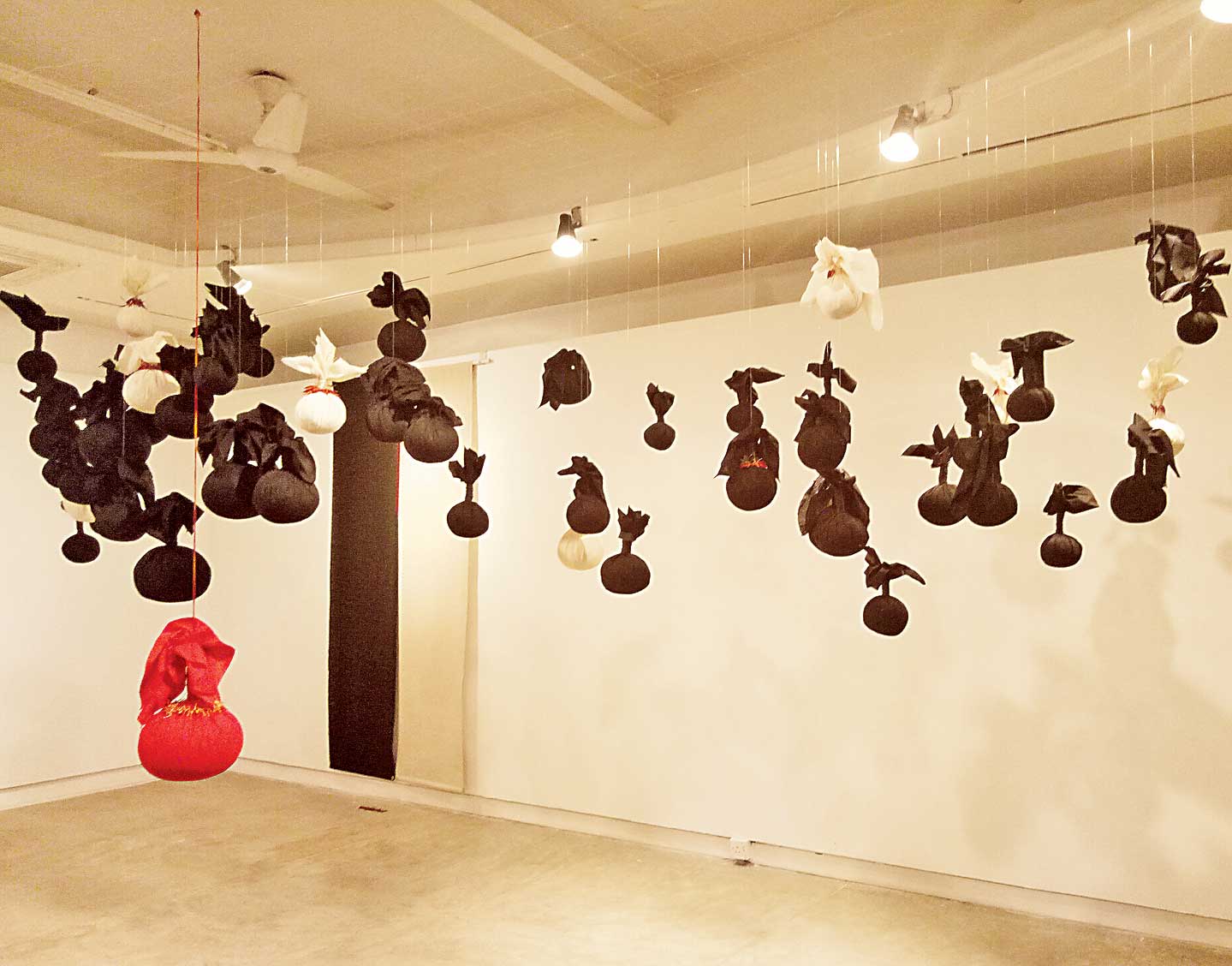IVS textile department faculty displays thought-provoking work
While exhibitions by students have been a part of the Indus Valley School of Art and Architecture’s culture, the faculty of the institute’s textile department showcased their own work for the first time at its gallery.
The theme ‘Dehleez’ was chosen for the March 14 show by the 10 artists, who are professionals in the disciplines they teach at the Indus Valley School (IVS). Speaking about the theme, artist Seveen Zaki Munir said the work displayed was very personal to all of them.
“We all discussed the theme and we associate ‘Dehleez’ with threshold, but there are very strong undertones of the textile techniques and mediums in all pieces. We didn’t want the exhibit to be solely about textile as in a finished good; rather, it was thought- provoking, and we wanted it to be tactile and interactive.”
She said she felt that the museum culture was decaying in the country and people needed to see and experience art to get away from their daily lives; hence, the exhibit. “Nothing is interlinked, so it would be larger than life for those visiting the gallery.”
Speaking about her own work, Munir said that it was just a drawing but it was shown as a tapestry, which was a medium in earlier days for artists to depict their surroundings by weaving.
“I have attempted to recontextualise the traditions showing how we are engrossed in our phones and are unable to focus or observe. Earlier, we didn’t have them and we were content, but now it is unbelievable how we are at the ‘Dehleez’ of this utter dependency on a phone,” she said.
Comprising round black and white balls with one red in the middle, the work titled “Yaadein’’ by Shehnaz Ismail was all about human experiences.
“I see a lot of despair around me, but I have also witnessed a lot of purity, which signifies the white, black being the despair. Red stands for hope as I am always surrounded by the wonderful energy of these young people I teach, so I can’t stop hoping for the future generally,” she explained.
She added that she too had recontextualised the traditions, hence the red chilies which were strewn on the gallery’s floor as well as kept on the red and white balls. “In our part of the world, they are used to ward off the nazar, the evil eye. I think purity and hope often get under the ire of evil eye.”
She said she chose red for hope because of the colour’s vibrancy and the roundness of the shape signifies the womb, which gives protection and shelter. Imrana Sherhryar, who is also the head of the department, also stressed that both fine arts and textile adopted from each other.
“The lines between them are very fluid, so the latter cannot be restricted to clothes alone.” She mentioned that the most interesting aspect of the participating artists was that save one, the rest were a part of the IVS alumni and were from different batches, so one might have been a student of the other.
“I feel it was important to open new horizons for students so that their ideas can be translated into art in several ways. My work revolves around the concept of people, ranging from family, friends, because I strongly believe that people leave a mark on my personality. Hence the column which I have created symbolises myself that I do not have a single identity; rather, all those around me have added to it,” Imrana explained.
“I am a weaver by profession so the boxboard cards are used in jacquard looms to explain the weaver about the insertion of cloth. It’s a coded meaning, and whenever an incident happens in my life, that card flashes before me as to how different events are interlinked leading to constant coding and decoding,” she added.
Another artist, Umer Rehman, who is a fashion designer by education, said that he didn’t want to put up a pret kurti owing to his background. His work, comprising a drawing of the heart anatomy, was followed by busts made of jute and other materials, with the theme of ‘inner self’.
“I chose inner self as my theme because I feel we are too concerned about adorning ourselves as we can see sales on outlets everywhere. We are always trying to hide behind the cloth but I feel heart is the purest form but we keep putting layers to it.
“I have drawn a heart which is followed by busts, in which I have placed hearts with flowers sprouting from them. Earlier, I did think about the garment, but I deviated from it and I consciously made an effort to tell my students that thought process is important and just because they were in textile department didn’t mean they must only work around clothes,” he said.
The exhibition ends on March 21.
-
 Therapist Killed In Office As Former Client Launches Knife Attack
Therapist Killed In Office As Former Client Launches Knife Attack -
 Gaten Matarazzo Brands 'Stranger Things' Final Scene 'nerve-racking'
Gaten Matarazzo Brands 'Stranger Things' Final Scene 'nerve-racking' -
 David Beckham Speaks Out After Son Brooklyn Beckham's Shocking Post
David Beckham Speaks Out After Son Brooklyn Beckham's Shocking Post -
 Sophie Turner Gets Candid About 'imposter Sydrome' Post 'GOT'
Sophie Turner Gets Candid About 'imposter Sydrome' Post 'GOT' -
 When Nicola Peltz's Boyfriend Anwar Hadid Found Solace In Dua Lipa's Arms
When Nicola Peltz's Boyfriend Anwar Hadid Found Solace In Dua Lipa's Arms -
 Claire Foy Reveals Rare Impact Of 'The Crown' Gig On Career
Claire Foy Reveals Rare Impact Of 'The Crown' Gig On Career -
 Megan Thee Stallion Teases New Music On The Way
Megan Thee Stallion Teases New Music On The Way -
 Blonde Kate Stuns In Photos With Prince William During Rare Joint Engagement
Blonde Kate Stuns In Photos With Prince William During Rare Joint Engagement -
 Kate Gosselin Reveals Harrowing Moment Thief Nearly Took Her Down
Kate Gosselin Reveals Harrowing Moment Thief Nearly Took Her Down -
 Billy Bob Thornton Weighs In On Contrast To 'Landman' Role
Billy Bob Thornton Weighs In On Contrast To 'Landman' Role -
 Amanda Holden May Swap Position To Different Reality Show: See Which
Amanda Holden May Swap Position To Different Reality Show: See Which -
 The Truth Behind Victoria Beckham's 'inappropriate' Wedding Dance Video
The Truth Behind Victoria Beckham's 'inappropriate' Wedding Dance Video -
 AI Startup Raises $480 Million At $4.5 Billion Valuation In Earlier Gains
AI Startup Raises $480 Million At $4.5 Billion Valuation In Earlier Gains -
 North Carolina Woman Accused Of Serving Victims With Poisoned Drinks
North Carolina Woman Accused Of Serving Victims With Poisoned Drinks -
 Robert Redford’s Daughter Amy Sings Praises Of Late Father
Robert Redford’s Daughter Amy Sings Praises Of Late Father -
 OpenAI And ServiceNow Team Up To Embed ChatGPT In Business Workflows
OpenAI And ServiceNow Team Up To Embed ChatGPT In Business Workflows






